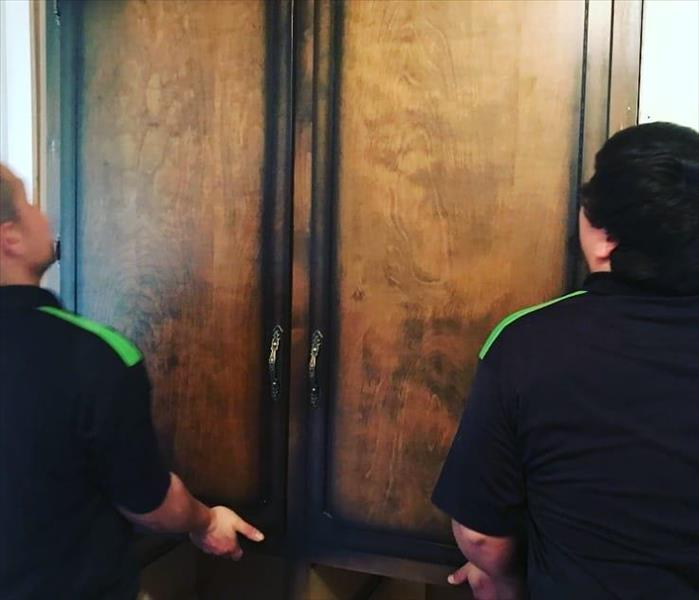Gotta clean those floors
5/7/2019 (Permalink)
In this photo Carlos and Adrian were pulling out a cabinet on a water loss job. They did this so they could pull the flooring and dry the affected areas.
www.lowes.com suggests that the damage that water causes, it can encourage the growth of mold on walls and floors — where it's readily visible — and in ductwork, attics and crawl spaces — where you might not notice it. A musty odor is a sign that mold may be present.
Additional Tips to Avoid Water Damage
- Have your attic ventilation and insulation inspected annually and seal gaps that allow warm air into the attic — such as those around access doors and light fixtures. When warm air collects in the attic, it can lead to the formation of an ice dam — ice around the eaves that causes water from melting snow and ice to back up under the shingles and leak into your home.
- If you have a sump pump, test it several times during the year. Follow the manufacturer's maintenance instructions.
- Check your water pressure with a pressure gauge; typically these screw onto a hose bib. The pressure in an average home is around 50 to 70 pounds per square inch (psi). Higher pressure causes extra stress on pipes and fittings and can lead to leaks.
- Inspect tile and grout around showers and tubs. Make any necessary repairs. Read Replace a Broken Ceramic Tile and Repair Tile Groutfor step-by-step instructions.
- Check for leaks around windows during rains and seal any you find.
- Use exhaust fans in the kitchen and bathroom to move excess moisture out of the house. Moisture in the air can condense on cool surfaces and cause problems. Read Controlling Moisture and Humidity in the Home for more ways to reduce indoor moisture.
- Locate your water shut-off valve so you can quickly turn off water to the home in an emergency. See Shut Off Your Home Water Supply for instructions on locating the valve.
If you have a fire, water, mold or asbestos disaster give SERVPRO a call today at (208) 523-5365.





 24/7 Emergency Service
24/7 Emergency Service
